Does Mr or Mrs Go First on Wedding Invitation? Etiquette Explained
Planning a wedding is an exciting journey, filled with countless details to consider. One common question that arises is whether to put “Mr.” or “Mrs.” first on the wedding invitation. Traditionally, “Mr.” is listed first in formal invitations for a married couple with the same last name. For example, you would write “Mr. and Mrs. John Smith.”
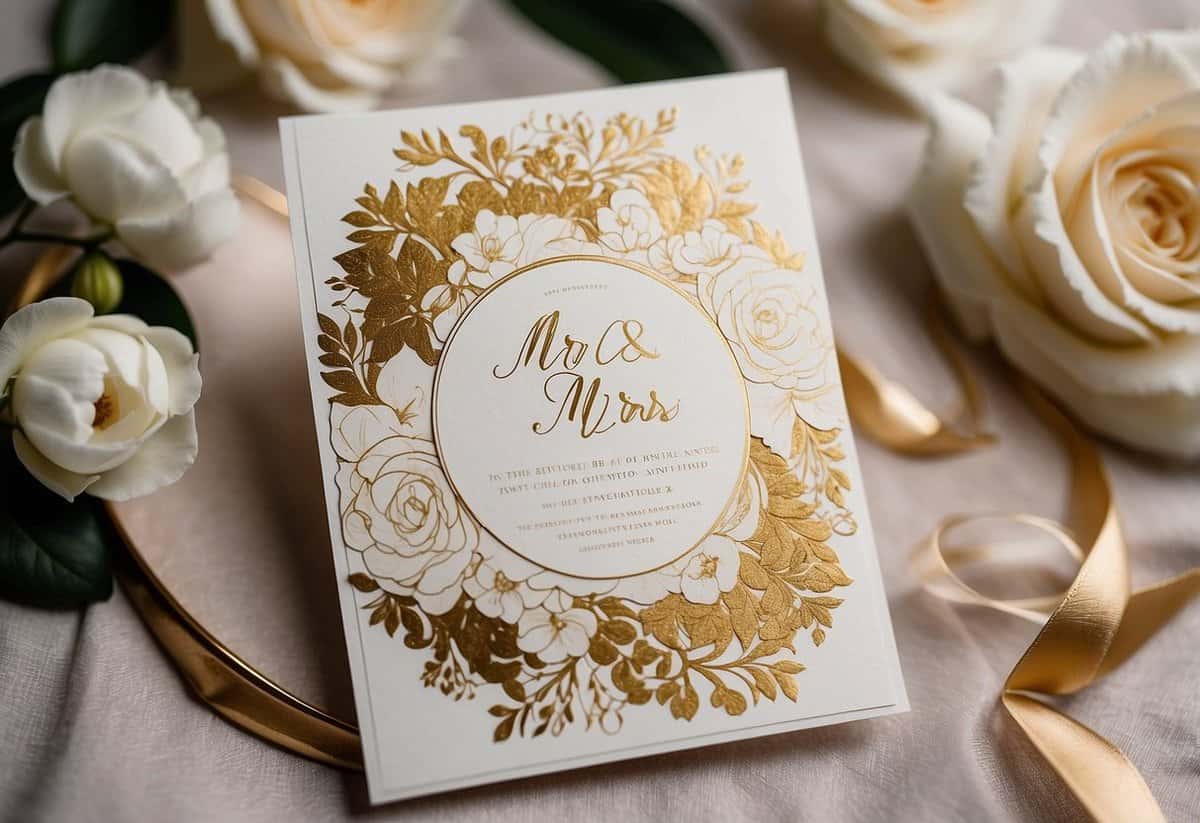
Understanding the nuances of wedding invitation etiquette can make your planning experience smoother. If you’re addressing invitations to a same-sex couple or want to modernize your approach, there are various ways to do so. You might use titles like “Mr. and Mr.” or “Mrs. and Mrs.,” or choose to write both first names, such as “Amy and Jennifer.”
Remember that while tradition holds value, your wedding day should reflect your personal style and preferences. Whether you follow classic rules or choose a contemporary touch, the goal is to create invitations that resonate with you and your guests.
Understanding Wedding Invitation Elements
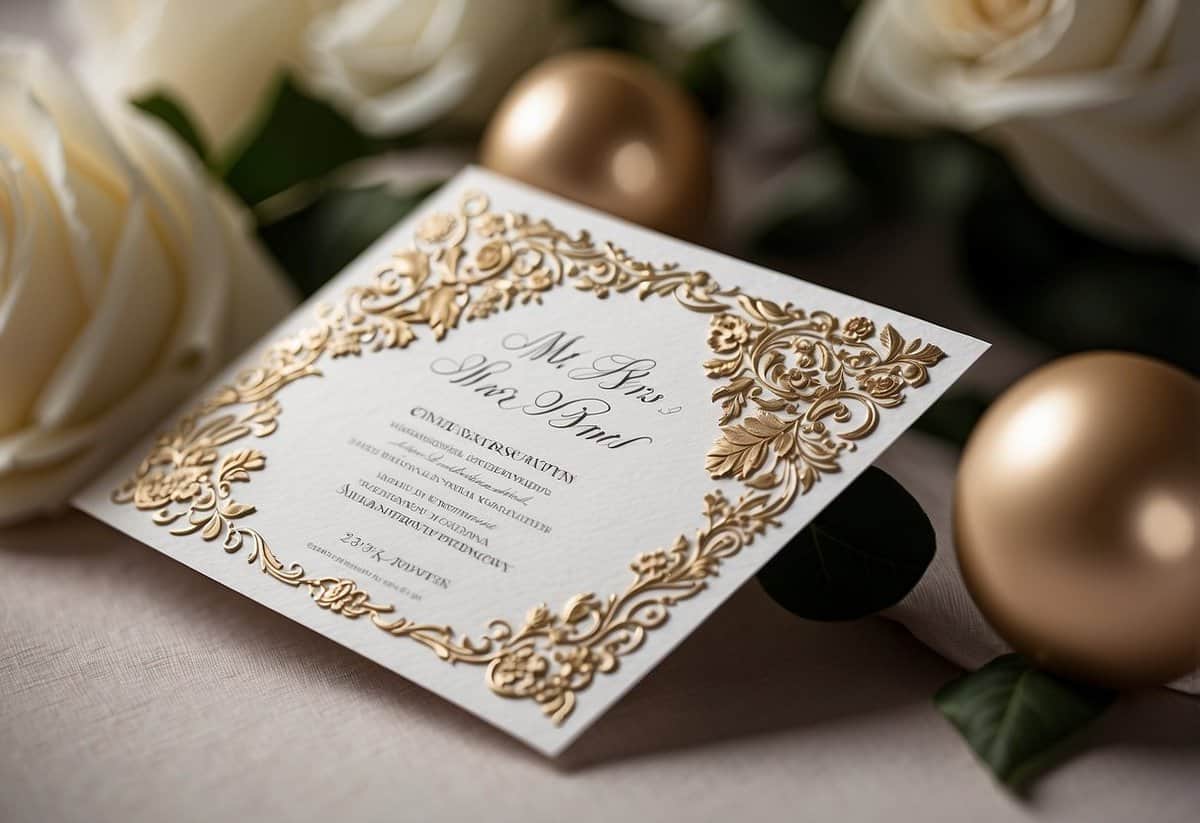
When sending out wedding invitations, it is important to understand the details that make each part special and proper. Knowing how to use titles correctly and how to handle different envelopes can make your invitations elegant and clear.
The Significance of Titles in Wedding Invitations
Titles are a key part of addressing wedding invitations. They show respect and can convey important social cues. For a married couple with the same last name, you can use Mr. and Mrs. John Smith. When addressing a same-sex couple, list each name separately, such as Ms. Jane Doe and Ms. Emily Smith.
If one of the invitees holds a doctorate, write out “doctor” for the outer envelope, like Doctor John Doe and Mrs. Jane Doe. On the inner envelope, you can keep it simple with Dr. Doe and Mrs. Doe. Using the correct titles helps set the right tone for your event and shows your guests that you care about their proper recognition.
Differentiating Between Outer and Inner Envelopes
Using outer and inner envelopes helps protect the invitation and adds a touch of tradition. The outer envelope includes the full address and proper titles. For example, you would have Mr. and Mrs. John Smith, 123 Wedding St., City, State, ZIP.
The inner envelope, which may be tucked inside the outer one, can be more personal and less formal. You might address it simply as John and Mary or Mr. and Mrs. Smith if you prefer to keep the titles. This layer adds a personal touch and shows you took extra care in preparing the invitation.
By handling these details thoughtfully, you create a clear, respectful, and beautiful invitation for your guests.
The Traditional Order of Names
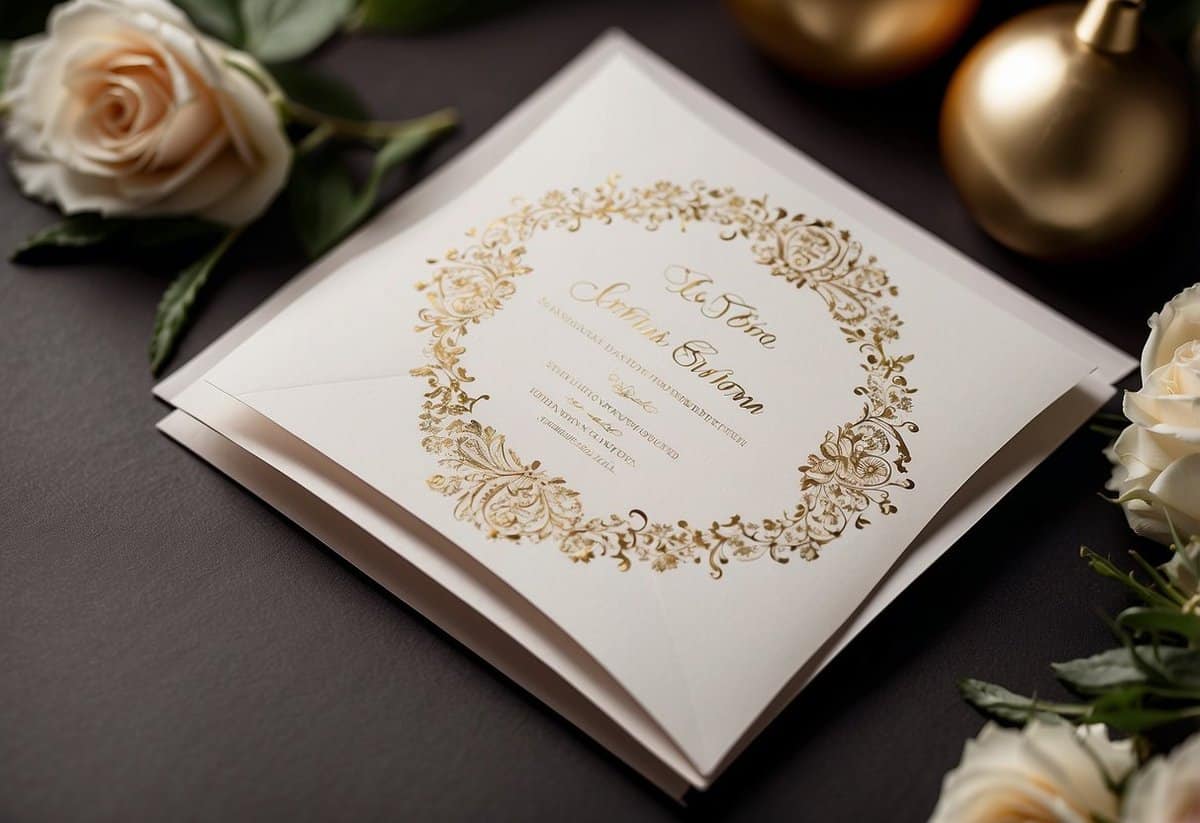
In traditional wedding invitation etiquette, the order of names can vary based on the couple’s relationship and status. The following sections break down the specifics for heterosexual couples, same-sex couples, and how to address married and unmarried couples.
Addressing Heterosexual Couples
For heterosexual couples, the bride’s name is traditionally listed first, followed by the groom’s full name. This order often comes from historical customs where the bride’s family hosted the event. For example:
- Mr. and Mrs. John Smith
- Ms. Jane Doe and Mr. John Smith
When the couple shares the same last name, it’s common to use Mr. and Mrs. John Smith. If the bride keeps her maiden name, you might see Ms. Jane Doe and Mr. John Smith.
Etiquette for Same-Sex Couples
For same-sex couples, modern etiquette offers more flexibility in the order of names. The names can be arranged alphabetically or based on the couple’s preference. Here are some examples:
- Mr. Adam Brown and Mr. Ben Green
- Ms. Emily White and Ms. Sophia Black
You might also choose to alternate based on who is hosting or another personal preference. There’s no strict rule, so you can arrange the names in a way that feels right for you and your partner.
Titles for Married and Unmarried Couples
For married couples with the same last name, the format typically used is Mr. and Mrs. LastName. For example: Mr. and Mrs. John Smith. If both partners retain different last names, list them jointly, such as Mr. John Smith and Mrs. Jane Brown.
For unmarried couples, use their full names with titles:
- Ms. Jane Doe and Mr. John Smith
- Ms. Sarah Lee and Ms. Emily Kim
This way, you acknowledge each person individually while keeping the address formal and respectful.
Special Cases and Considerations
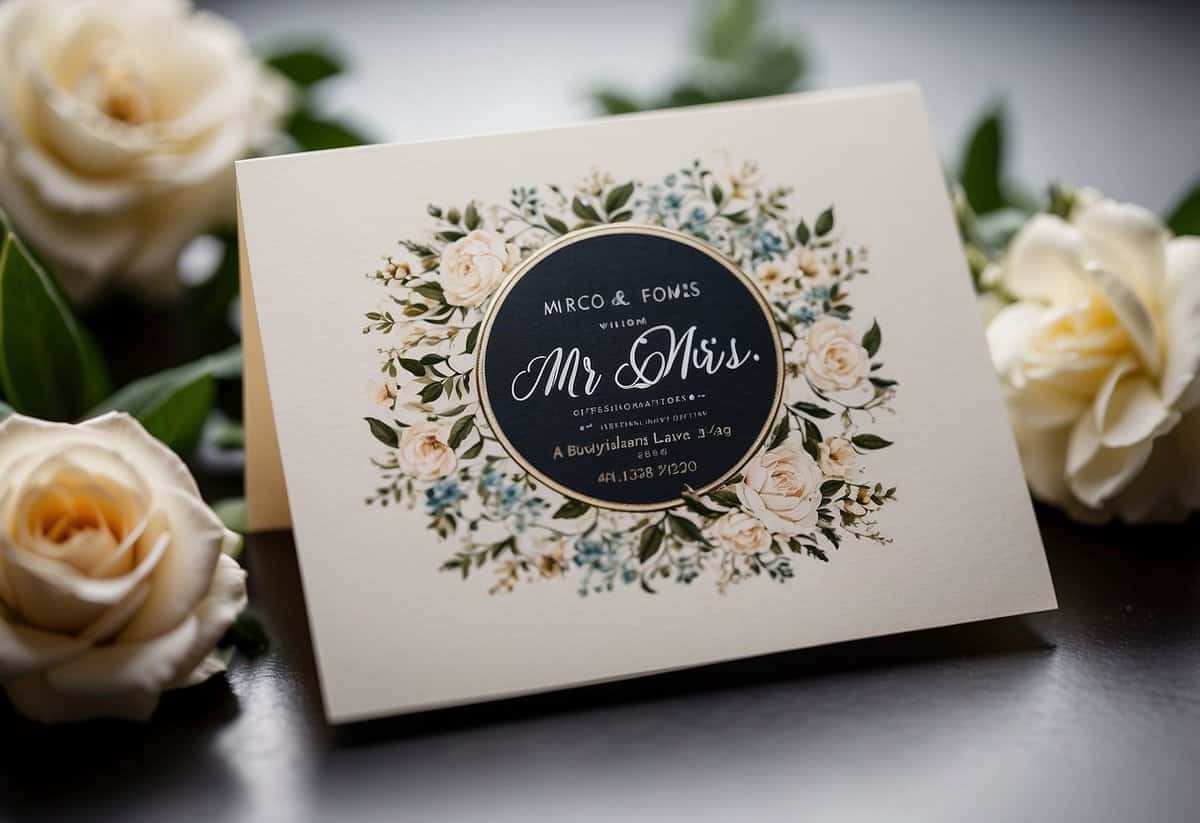
When addressing wedding invitations, there are specific scenarios to consider to ensure you show respect and proper etiquette. These can involve professional titles, different last names, or addressing single and widowed guests.
Professional Titles and Academic Honors
When addressing doctors, judges, or military personnel, always use their titles.
- For a married couple where both are doctors, it’s proper to write The Doctors Smith.
- If one spouse has a different professional title, like a judge, you might write The Honorable Maria Jones and Mr. David Jones.
- For military personnel, you would use Captain John Smith and Mrs. Emily Smith.
Remember: Titles should always come before names to show respect for their professional achievements.
Couples with Hyphenated or Different Last Names
Some couples choose to keep their own last names or use a hyphenated version. This can change how you address them on your invitations.
- For a married couple with hyphenated names, you would write Mr. Michael Brown-Smith and Mrs. Sarah Brown-Smith.
- If they have different last names, you could write Mr. John Brown and Mrs. Anne Smith.
Tip: For long names, make sure to space them properly, splitting lines if needed.
Addressing Single and Widowed Guests
Single and widowed guests also require special attention to detail.
- For a single woman, use Ms. Emily Johnson. If she prefers Miss, that’s acceptable too.
- For a single man, the standard Mr. John Doe is appropriate.
- For a widowed woman, use her married name, such as Mrs. Mary Smith. This shows respect and acknowledges her late spouse.
Note: Always double-check preferences, as some may have specific ways they prefer to be addressed.
By using these guidelines, you ensure everyone feels respected and valued on your special day.
Wording Your Wedding Invitations

When wording your wedding invitations, it’s important to set the correct tone. The way you phrase your invites can convey whether your wedding is formal or casual, and it should accurately represent your special day.
Choosing the Right Language for Formal Invitations
For a formal invitation, use traditional titles and language. This includes addressing recipients with “Mr.,” “Mrs.,” “Ms.,” or “Dr.” followed by their full names. If you’re inviting a married couple with the same last name, write “Mr. and Mrs. John Smith.” If the couple has different last names, use both full names, such as “Mr. John Smith and Mrs. Jane Doe.”
Avoid using nicknames or abbreviations. Spell everything out, including titles and street names. This formality shows respect and sets a serious tone for your wedding. For example, write “Doctor” instead of “Dr.” and “Street” instead of “St.”
You’re also expected to include the hosts’ names, which are typically the parents of the bride. A formal invitation might start with “Mr. and Mrs. John Smith request the honor of your presence at the marriage of their daughter.”
Casual Wedding Invitation Guidelines
For a casual wedding, you have more freedom with the wording. You can use first names and nicknames if it feels right. For example, you might write, “Tom and Jane invite you to celebrate their wedding.” This casual tone makes guests feel relaxed and excited for a fun event.
You can also forgo titles and just use first and last names. This approach works well if your guest list includes friends and close family members who prefer informal communication.
Remember to keep the message clear and straightforward. You can use casual language like, “Join us for a celebration of love as we marry!” This less rigid format allows for creativity and personal touches that reflect your unique relationship. If abbreviations or nicknames fit your style, don’t hesitate to include them.
Final Touches Before Sending Invitations
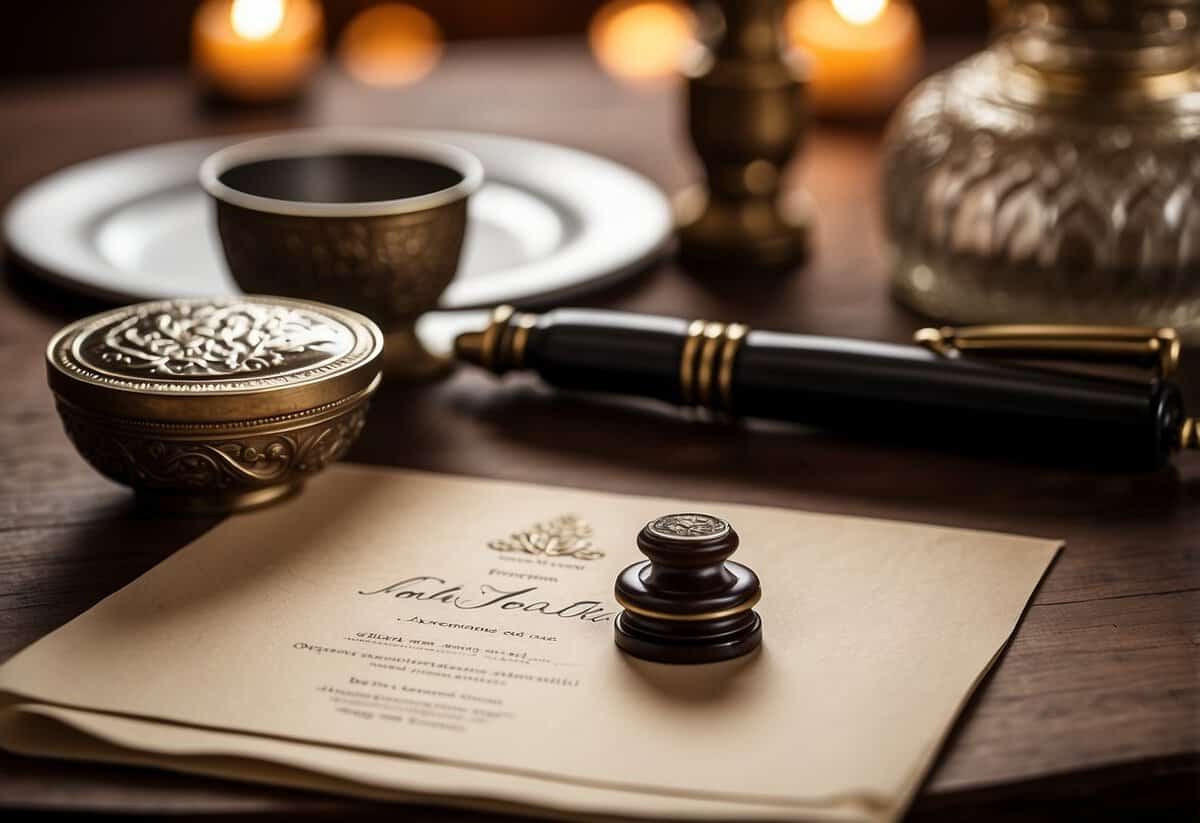
As you prepare to send out your wedding invitations, attention to detail is crucial. From assembling the wedding invitation suite to managing RSVPs and plus-ones, these final steps ensure your invites are perfect and ready for your guests.
Assembling the Wedding Invitation Suite
Make sure you have all the pieces of the suite ready: the invitation, RSVP card, and any enclosures like maps or accommodation details. Place the invitation on top, with the text facing up.
If you have inner and outer envelopes, the inner envelope should contain all the pieces, while the outer envelope protects them. When stacking, keep invites flat to avoid creases. This attention to detail makes the invites look neat and thoughtful.
The Art of Addressing Envelopes
Properly addressing envelopes adds a touch of formality. For married couples with the same last name, use “Mr. and Mrs.” followed by the husband’s full name, like Mr. and Mrs. John Smith.
For same-sex couples, you can use Mr. and Mr. or Mrs. and Mrs. with each person’s full name. Consider hiring a calligrapher for elegant handwriting. Always double-check spelling and titles. This ensures respect for your guests’ names and adds a personal touch.
Managing RSVPs and Plus-Ones
Include a self-addressed, stamped envelope for the RSVP card. This makes it easy for guests to respond. Clearly note whether they can bring a plus-one. Use language like “We have reserved __ seat(s) in your honor” to be explicit.
Track RSVPs in a spreadsheet with columns for guest names, attending status, plus-ones, and dietary restrictions. This helps manage the guest list effectively. Staying organized ensures that your big day runs smoothly.



